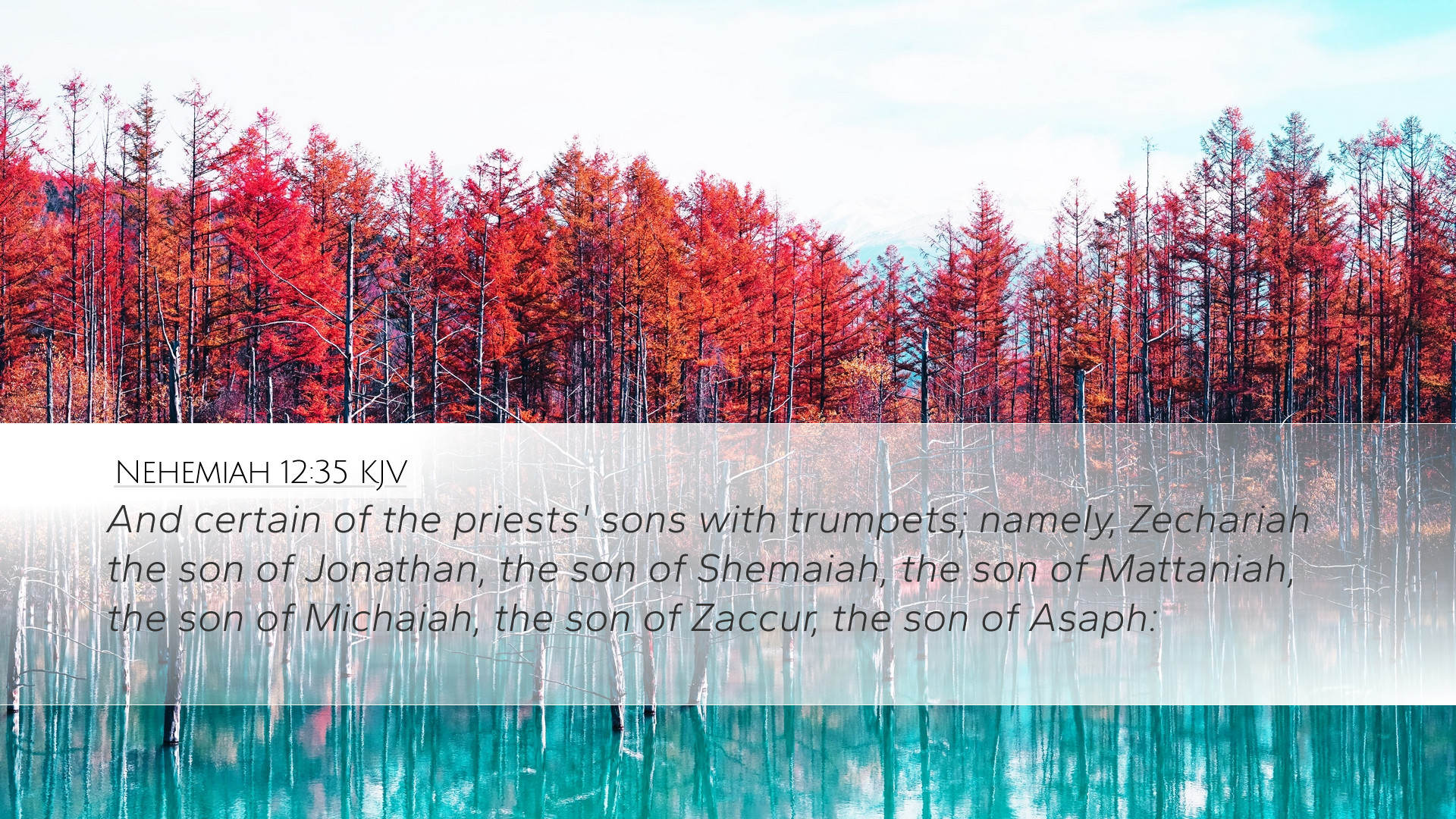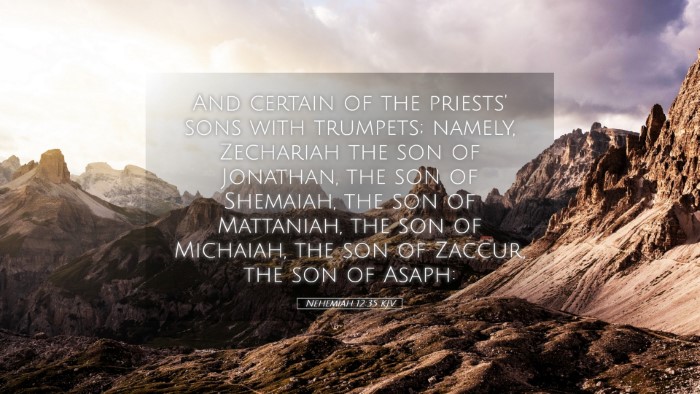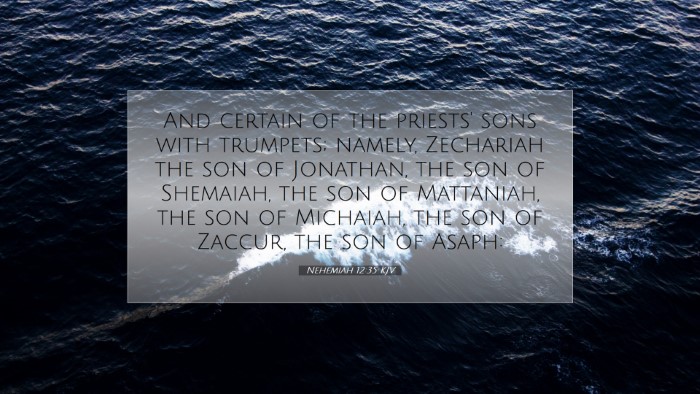Commentary on Nehemiah 12:35
Nehemiah 12:35 states:
“And certain of the priests' sons with trumpets; namely, Zechariah the son of Jonathan, the son of Shemaiah, the son of Mattaniah, the son of Michaiah, the son of Zaccur, the son of Asaph:”
Introduction
This verse falls within the context of the dedication of the wall of Jerusalem, a momentous occasion that Nehemiah organized after the exiles returned. In this passage, we observe the significance of music and celebration in the spiritual life of Israel, as well as the essential role of the Levites and priests in the worship and communal life of the people.
Contextual Background
The context of Nehemiah 12 involves the restoration of Jerusalem and the efforts to reinstate proper worship practices. After years of oppression and exile, Nehemiah's leadership brought a resurgence in Jewish identity and faith. The specific mention of the priests' sons playing trumpets highlights a key aspect of worship during this time.
Insights from Matthew Henry
According to Matthew Henry's Commentary, this verse emphasizes the importance of the trumpets in ancient Israelite worship. The trumpets served not only for call to worship but as instruments of celebration during significant events.
- Trumpets as Instruments of Praise: They signaled important moments in religious life, reflecting the glorification of God and the joy of the community.
- Significance of Names: Each name mentioned represents a lineage of priests, which illustrates the continuity and faithfulness of God’s covenantal relationship with Israel.
Reflections from Albert Barnes
Albert Barnes responds to this text by underscoring the hierarchy and order established in Temple worship. Barnes notes that the sons of priests playing trumpets exemplifies the spiritual leadership exercised within Israel.
- Hierarchy in Worship: The involvement of priests' sons stresses the generational nature of spiritual service, portraying a model for community involvement in worship.
- Symbolism of Trumpets: Barnes illuminates that trumpets also heralded important announcements, serving as reminders of God’s saving acts and commands to the people.
Insights from Adam Clarke
Adam Clarke’s Commentary digs deeper into the cultural implications of the trumpets and the role of music in Israel's heritage. Clarke points out that music, particularly the sound of trumpets, was critical during ceremonies.
- Cultural Heritage: The act of blowing trumpets was not merely a tradition; it was woven into the very fabric of their identity as a people chosen by God.
- Recognition of Leaders: Clarke emphasizes acknowledging one's leaders in worship; thus, the priests' sons are depicted as pivotal in leading the congregation into a spirit of joy and reverence.
Thematic Analysis
This verse highlights several themes that are crucial for understanding the ministry and gatherings of God's people:
- Celebration of Unity: The dedication of the wall becomes a communal celebration, reflecting unity and gratitude among the returned exiles.
- Worship and Praise: The act of worship is central to the life of the covenant community, and the use of trumpets signifies the call to worship and acknowledgment of God's presence.
- Generational Faithfulness: The lineage of the priests emphasizes God's faithfulness through generations, showcasing a model for perseverance in faith.
Applications for Today
This verse speaks not only to the historical practices of ancient Israel but also offers profound insights for contemporary worship and ministry:
- Value of Sound in Worship: Just as the trumpets called people together, church leaders today should recognize music's power to draw congregations into worship.
- Importance of Legacy: The involvement of priests’ sons teaches current generations the importance of spiritual legacy and the need to pass down faith to future followers of Christ.
- Encouraging Community Involvement: Every member is crucial in worship; much like the priests’ sons, all believers are called to contribute to the life of the church by engaging heartily in worship.
Conclusion
Nehemiah 12:35 serves as a reminder of the joyous expressions of worship within a community dedicated to the Lord. Insights from Matthew Henry, Albert Barnes, and Adam Clarke provide rich commentary that encourages pastors, students, and scholars to reflect on the dynamics of worship, community, and faithfulness to God's covenant. As we engage with this text, may it inspire a deeper commitment to worship and a renewed appreciation for the roles we play in the community of believers.


